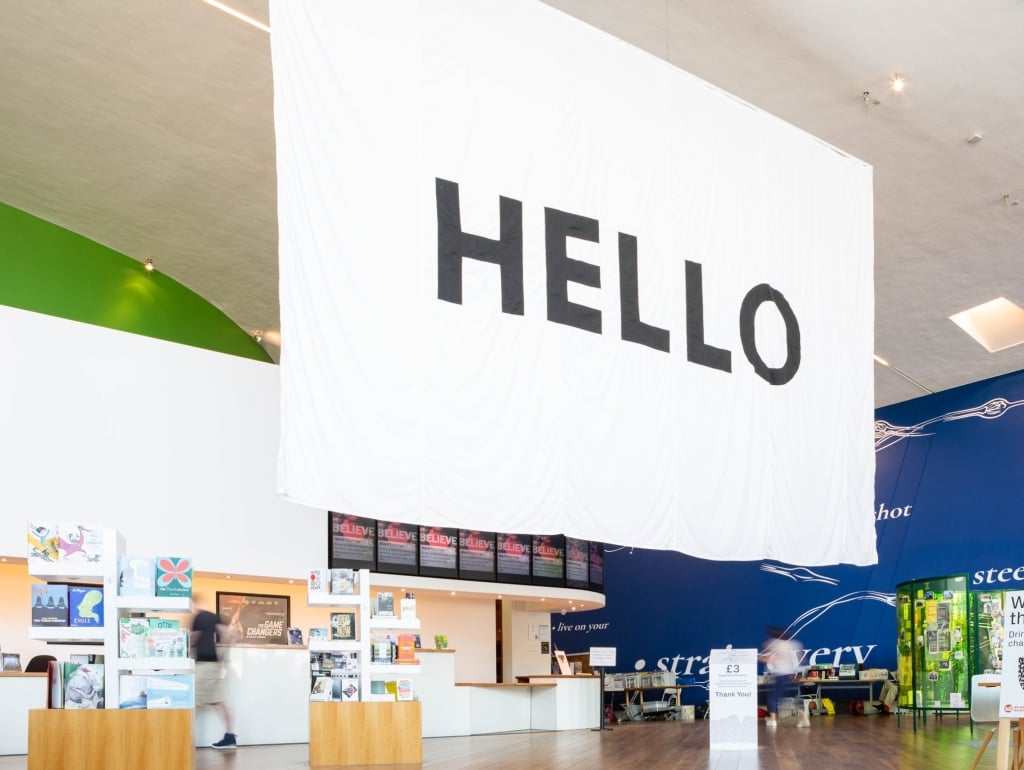Starting by walking into Firstsite and ‘confronting’ Essex Man by Michael Landy, EVEWRIGHT proceeded to pour white rum onto the gallery floor whilst recalling family members and others who have passed away.
Circling the feet of Essex Man, EVEWRIGHT poured, splashed and painted black and gold paint with increasing ferocity, creating a maelstrom of brushstrokes. At times the action was vigorous enough to dislodge seeds and strands from the handmade brushes EVEWRIGHT used to create the drawing.
The work stretches from the front of the Firstsite’s cavernous foyer area, all the way through the building to the café bar area at the rear.
The brushstrokes, meander abstractly across the floor, exploring and examining the contours of the building. The black paint symbolise his experiences as a Black artist living and working in Britain.
The gold paint refers to hopes, dreams and aspirations of those who have travelled here to seek a future. The black paint gives way to an intense gold section at the entrance to the main exhibition spaces where more of EVEWRIGHT’s work is on display.
Libation remains on display at Firstsite as a legacy of the exhibition and is an evolving artwork, changing as visitors interact with the space and influenced by natural elements over time.
The work holds deep cultural significance. It references the ancient practice of libation, prominent in Egyptian society, which continues to be a part of African history and culture, especially in memory of the dead. It’s also a ceremony increasingly included in contemporary Black and African weddings. The practice was adopted by the Greeks and Romans, and since Colchester is the UK’s oldest Roman city, this artwork creates a unique link between Roman history and African traditions for our visitors.
Please note the paint used was specially selected to help prevent any damage to the floor surface and can be removed, however there is no plans to remove this artwork at present.
Find out more about EVEWRIGHT's Libation exhibition